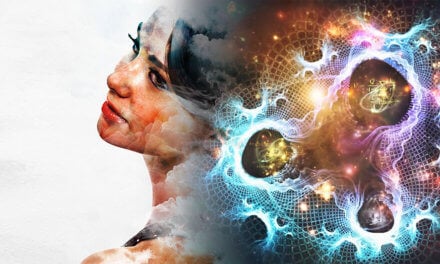
Genesis of a Buddha Part 1: The Mystical Origins of Gautama

The historical life of Gautama the Buddha needs little introduction, as it is one of the planet’s most epic tales of awakening.
Yet, while the account of Prince Siddharta’s abandonment of the materialistic life in the pursuit of spiritual realization and his subsequent enlightenment is well-known, few know the mystical, multi-life journey that brought him there.
As such, before we begin, it is of immense value to learn a little bit about the three Buddhas that preceded Gautama, and the one that will follow him.
Prelude: The 5 Sama Sam Buddhas
In yogi circles it is well known that there were many Buddhas before and after Gautama – as even he himself stated:

“There have been many Buddhas before me and there will be many Buddhas in the future.”
However, what isn’t commonly known is the scale and magnitude of each Buddha’s enlightenment.
Gautama’s enlightenment was actually of the highest scope and qualified him to be of the caliber of what is formally known as a Sama Sam Buddha – a fully & completely enlightened world teacher.
This is the highest realization, and when the word “world” is used, it must be remembered that yogic cosmology includes an understanding that there are countless realms where life exists far beyond the earth plane.
In fact, the spiritual vibrations emitted when Gautama attained enlightenment are said to have spread to over 10,000 realms and will last approximately 4,000 earth years.
The overwhelming power of Gautama’s attainment of Omniscience gave him a complete knowledge of the source of all suffering and its cause. This knowledge was not taught to him, nor did he learn a technique by which to enter nirvana from an outside source. His own direct experience of the fundamental truths of Reality dawned purely from within himself, as did the methods by which other living beings could realize the same.
As such, Gautama’s realization and subsequent teachings were not limited to only human beings; as he also taught the beings living in other solar systems, devas (light beings) in other dimensions, and even deities dwelling in the higher realms.
On our planet, three others before him had this exact same experience of complete Omniscience in which the truth of the origin, cause & path out of suffering, as well as the truths of impermanence and egolessness, became clear through the direct experience of nirvana. They are the Sama Sam Buddhas Krakucchanda, Kanakamuni & Kashyapa.
In 624 BCE, at the time of Gautama’s birth, the final waves of Dharma vibrations from Buddha Kashyapa’s enlightenment were receeding from our earth plane and signaled the birth of a new Sama Sam Budha, who would once more teach the world the way to liberation.
In this way Gautama is the 4th in the line of Sama Sam Budhas, during the current world-cycle (called Bhadra Kalpa by Buddhists).
It is predicted that his teachings will last until approximately 3380 AD (about 1,400 more years from now), at which point the next Sama Sam Budha, Maitreya, will incarnate on this plane.
Summary of the 5 Sama Sam Buddhas of this cycle:
-
Krakucchanda
-
Kanakamuni
-
Kashyapa(previous)
-
Gautama (current)
-
Maitreya (future)
Buddha’s Life as the Hermit Sumedha
Before his birth as Prince Siddharta, the Buddha Gautama had a number of very notable births that help chronicle his journey to enlightenment. On the eve of his realization of the Absolute Truth, sitting under the Bodhi tree in India, he had spontaneous revelations of all his former existences of which he spoke of openly.
In one such birth, he was born in a wealthy family in the ancient city of Amaravati on the banks of the Krishna River, in Andhra Pradesh India.
Both of his parents died while he was a child and left the young boy an immense ancestral wealth. This heirloom was given over to him in his teens when he came of age. He had no interest in it, however, and gave it all away to the needy people of the city in a huge alms-giving ceremony.
Afterwards, with no possessions left, he peacefully walked away into the nearby forest where he practiced deep meditation for extended periods of time.
After many years of solitude, in a meditative vision, he came to know that an enlightened sage named Dipamkara would soon come to Amaravati to receive alms and give teachings. Having not yet realized the Absolute Truth through his own meditation, the hermit Sumedha decided to go and receive the blessings of this Buddha in the hopes that Dipamkara would show him the way to liberation.
Sumedha’s Transformation into a Boddhisattva
Having left his hermitage in the forest, Sumedha went to the city and came across Dipamkara Buddha. Immediately upon gazing at the majesty and brilliance of this Buddha, the hermit suddenly and unexpectedly had a profound inner transformation in which he decided to forsake his pursuit of personal liberation. Instead, he vowed to become a Sama Sam Buddha; to realize the Ultimate Enlightenment in which he would be able to be of supreme benefit to all living beings by teaching them the path to nirvana.
After making this resolve, Sumedha was approached by a young woman and given a handful of flowers. He then took the flowers and offered them to the feet of Dipamkara, who was aware of everything that had transpired within the hermit.
He accepted the offering, gave his blessing to the hermit and announced that in due course, after countless more births in which he would need to accumulate the punya (good karma) necessary, he would indeed become the Sama Sam Buddha known as Gautama.
Dipamkara, knowing the qualifications needed to become a Sama Sam Buddha, chose not to teach the hermit the methods needed to realize nirvana. He simply gave his blessings, but no direct instructions. Sumedha would have to now, and until his subsequent enlightenment, discover the truth within himself without any outside agency to support him.
The hermit Sumedha, now a bodhisattva (one motivated by great compassion), retreated back to the forest where he continued to develop his practices for the rest of his life.
Upon leaving the body of the hermit, many other lives were lived, all in which the would-be Sama Sam Buddha continued to accumulate the causes necessary for his eventual enlightenment. It was in his final birth, as Prince Siddharta, in 624 BCE, that he would realize the Ultimate Truth and teach the means to liberation from all suffering. Thus, for the next 4,000 years his teachings would be available to all that would seek them.
>>> Continue to Part 2: The “Ancient Path” As Taught By Gautama



























